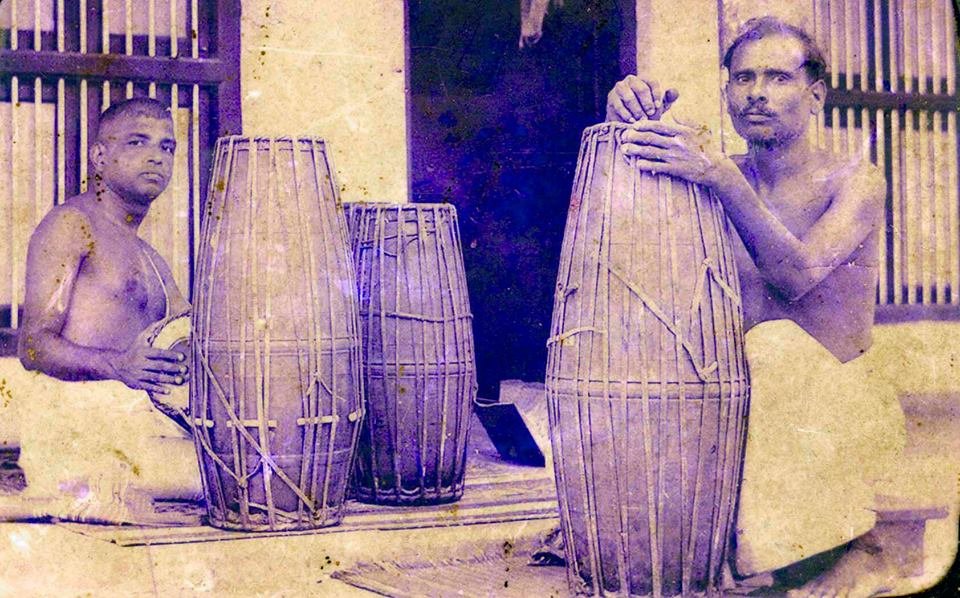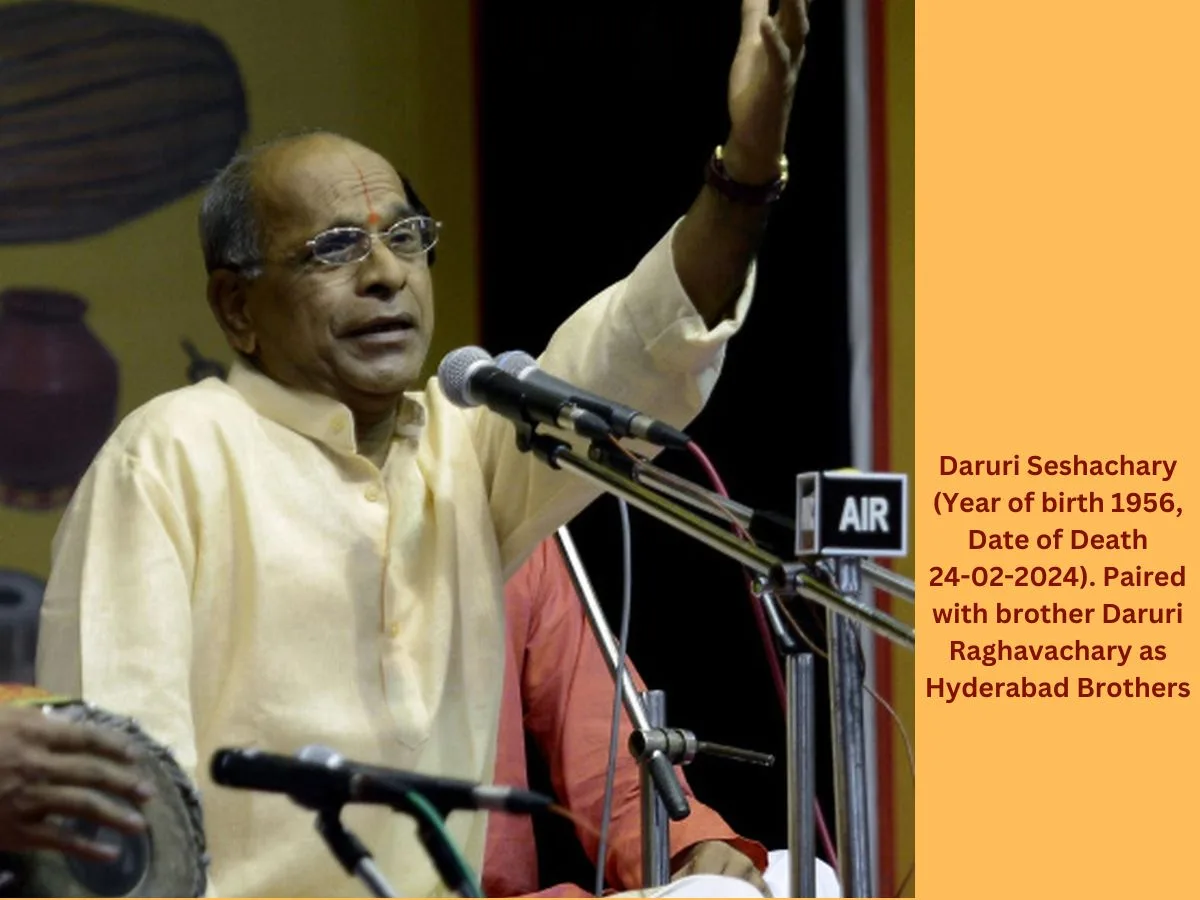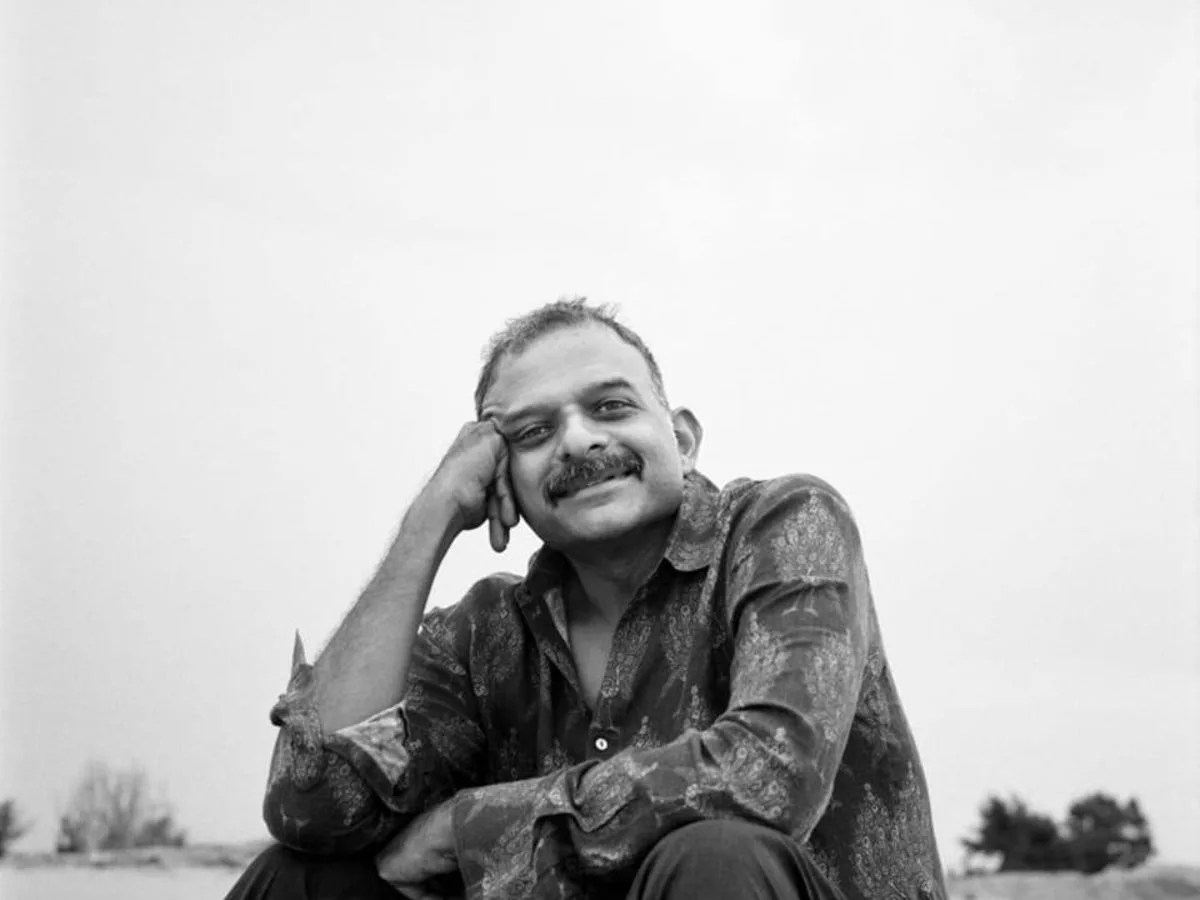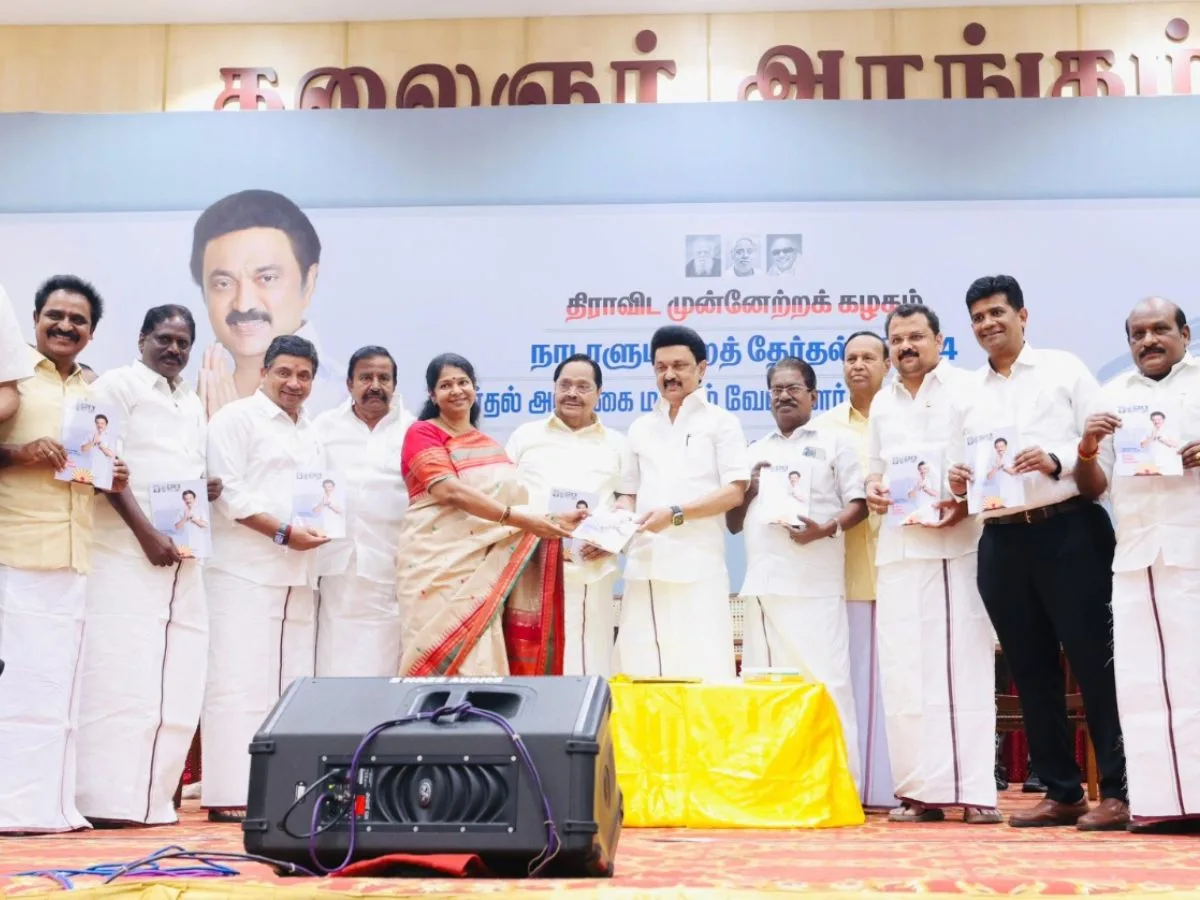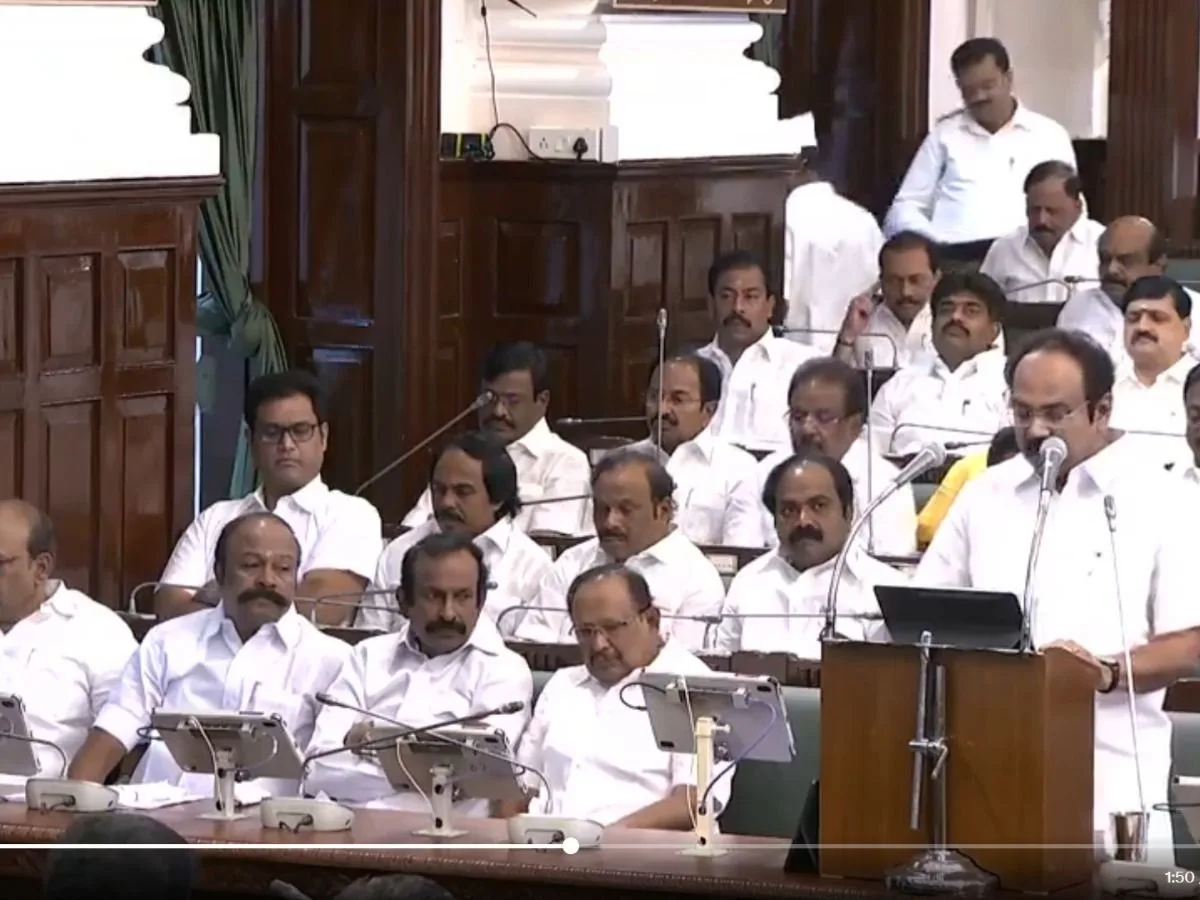Read in : தமிழ்
People generally know only about personalities who play musical instruments, but those who design and make these instruments are rarely in the public realm. If Carnatic music is a tree, then the fruits seem to hog the limelight, not the roots. Some instrument makers however stand out, with their genius, making it impossible to deny them the limelight. Fernandes (known as Parlandu) was one such exceptional mridangam maker.
When we go through the history of the percussionists of the last century, among the earliest artist we can trace is Thanjavur Narayanasamiappa. And when it comes to the mridangam makers, the earliest one that we know of is Sebastian. It is not known if he worked for Narayanasamiappa, but he seems to have worked for Manpoondiya Pillai, who was his contemporary; and for Dakshinamurthy Pillai and Thanjavur Vaidyanatha Iyer who belonged to the subsequent generation.
If Carnatic music is a tree, then the fruits seem to hog the limelight, not the roots.
Mani Iyer set aside a place in his own house and ensured that the mridangam work was carried out there without interruption. He used to rest for some time in the afternoon when he returned from an arduous concert tour and if Fernandes had finished his work at that time and played the instrument a bit for checking, Mani Iyer would get up energised on hearing the sound and go to him. With Fernandes, he discussed troubleshooting on the mridangam. The knowledge he gained from these discussions helped him to introduce innovations in the instrument.
Fernandes was also doing mridangam work for celebrated musician Pazhani Subrahmaniya Pillai, who was Iyer’s contemporary. Mani Iyer’s son recalled an interesting episode involving the three.
“Once, Fernandes did not turn up in their house for a few days. When he came at last, he said that he had gone to work for Pazhaniayya (Subrahmaniya Pillai). Appa began enquiring about Pillai’s instrument with curiosity and told him ‘Pillai’s thoppi’ (the left side of the mridangam that is not tuned to a frequency but produces bass sounds) is nice and soothing, but you are not making one like that for me.
‘Don’t worry sir, I will make a similar one for you in your next mridangam’, said Fernandes.
Within a few days he brought a mridangam and told appa that he had made it just like the one he made for Pillai.
Appa played the instrument, but was not satisfied, and said, ‘No dear, this is not like Pazhani’s thoppi.’
‘No sir, what I have made for you is exactly what I made for Pazhaniayya, but just altered it slightly for your sake. Next time, will make exactly like his and bring,’ he assured.
Fernandes did say that then, but never really brought one later. Father kept on asking him when he was going to bring an instrument that had Pazhani’s thoppi, but lost his patience soon and, one day, asked him straight on his face: ‘When are you going to make it for me? You only promise but don’t deliver.’
Father was then leaving for his concerts in Bombay (Mumbai at present).
‘Sir, I have received new skins now. By the time you return a mridangam will be ready for you with a thoppi similar to that of Pazhaniayya,’ replied Fernandes.
Father returned from his Bombay tour. He seemed to be so obsessed with the mridangam that instead of entering the house, he went straight to the mridangam making shed.
‘Have you made it just like Pazhani’s thoppi?’ father asked him anxiously.
‘Definitely sir, you yourself can play and see,’ replied Fernandes.
Father took the mridangam and played it immediately, but was not satisfied with it and said ruefully, ‘the delight one gets listening to the sound of pazhani’s thoppi is still missing.’
Fernandes smiled gently and replied, ‘Sir, it has to do with his hands.’
Appa looked up. ‘Are you saying my hands cannot create the same effect?,’ he asked him like a child. He took Fernandes’s comment very sportively’.”
This incident graphically captures the great respect that Mani Iyer, the celebrated percussionist who was at the peak of his career then, had for a fellow artist and for a mridangam-maker.
Many times, he willingly shared with Fernandes many gifts like shawls which were given in his honour in his concerts.
“The mridangam should be made by Somu Aasari from good sandalwood; it should then be assembled and fully prepared by Fernandes; and I should accompany the great vocalist Ariyakudi Ramanuja Iyenga – that would be my definition of heaven,” Mani Iyer said once.
Many artists have spoken highly about the expertise that Fernandes had. He only needed to be told which vocalist was going to give the concert, and there was no need to tell him the shruthi. Fernandes would prepare the mridangam for that shruthi. The beauty was that he didn’t even have a tanpura or a shruthi box with him.
“Once I had come to play mridangam for Musiri Subrahmaniya Iyer who told me to play for M S Subbalakshmi at Central College that evening. I had brought two mridangams to play for Musiri, but Fernandes and Chetti took only a few hours and made them suitable for accompanying MS,” says Vidwan T K Moorthy.
Normally, it is not possible to play a new mridangam directly in a concert. The disciples will first practice playing on it, and only after the first and the second saadam (saadham is the paste made with rice and metallic powder and applied on the center of the right side of the mridangam) falls down and the third saadam is cast, the instrument will qualify for playing in a concert. However Fernandes’ work was so special that even the new mridangam was mature from the word go. Trichy Sankaran recalls how he could play such a new mridangam for the famous vocalist Balamurali Krishna in a national programme and how people greatly praised the instument’s tone and resonance.
Read in : தமிழ்
